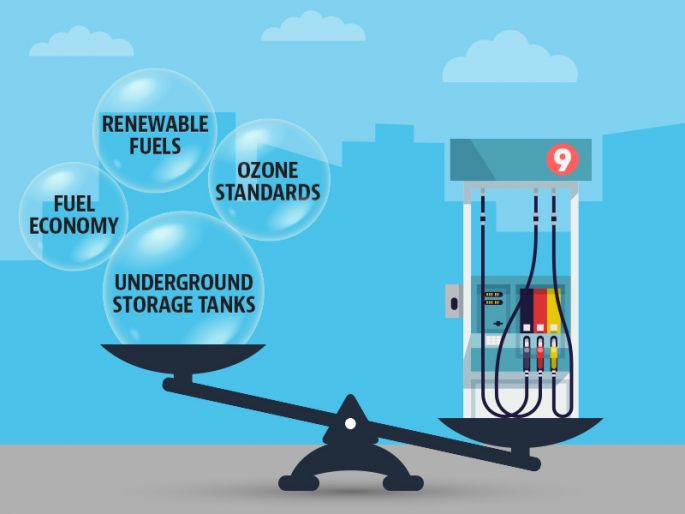Over the past 30 years, the fuel industry has oscillated between periods of regulation and de-regulation. With a new administration taking office, it appears that reducing regulatory requirements is a top priority. How will this shift affect traditional petroleum handling and distribution channels?
Renewable Fuels: Future Renewable Volume Obligations and the outcome of a proposed Reid Vapor Pressure waiver for E15 will be a signal if a growing or contracting biofuels market is on the horizon.
Underground Storage Tanks: If EPA budget cuts are a sign of things to come, we could be looking at a pause in compliance advancement. Fewer compliance requirements could reduce compliance costs. See related story about a less-expensive containment sump testing method.
Ozone and CAFE Standards: A bill to delay the deadline for revising the National Ambient Air Quality Standards until 2025 could lower compliance equipment expenses. In addition, if efforts to improve fuel economy subside and fuel prices remain steady, we might see increased fuel consumption.
If legislators and the administration support policies that lead to a productive mix of regulations – few enough to spur entrepreneurship and reduce compliance costs, but just enough to protect our air and water resources – then we could see an economic climate that supports growth at the retail-level. For information on this timely topic, watch Fuel Marketer News for Source’s next Fueled for Thought column.
STORY UPDATE:
In the last edition of SourceLine we discussed the future of road funding and its impact on retail fuel. California recently passed a 12-cent gas tax increase. A proposal to repeal it has already been introduced. Source will continue to monitor this topic for developments.




